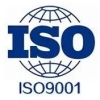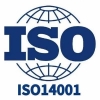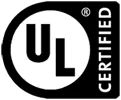Advanced ceramics for new materials leading the automotive performance revolution
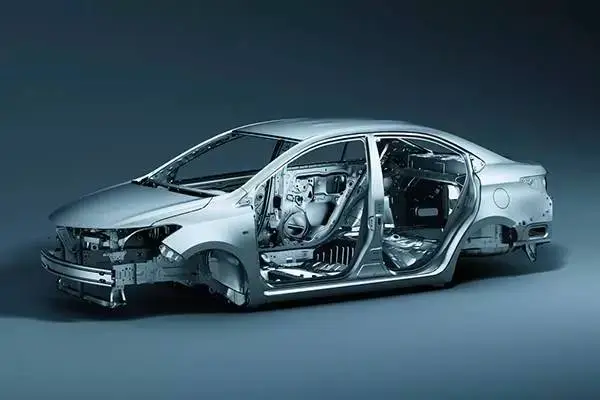
In today's automotive industry, how materials are selected and used is very important for the performance, efficiency and durability of the car! In recent years, this advanced ceramic, with its excellent physical and chemical properties, slowly become a star material in the field of automotive manufacturing! Its unique ability, in the engine, braking system, exhaust system, these key places, have shown great application potential, thus promoting a big change in the performance of the car.
Let's talk about what this advanced ceramic is and what its characteristics are. This advanced ceramic ah, is particularly valuable in technology, performance is particularly good in ceramic materials. These materials are generally high strength, high strength, high temperature resistance, wear resistance, corrosion resistance, but also pretty good. Compared to traditional ceramic materials, this advanced ceramic performs better in terms of density, uniformity and microstructure, and its performance can meet the increasing requirements for materials in the automotive industry.
This advanced ceramic generally has silicon nitride, alumina, zirconia, etc., because of these, it has those powerful characteristics. For example, silicon nitride ceramics are not only strong, but can also withstand extremely extreme temperature changes, which is perfect for engine components. Speaking of zirconia, its impact resistance and wear resistance are particularly good, and it is used in the transmission system of automobiles.
The use of the engine, the engine that is the heart of the car ah, its performance is directly related to the vehicle's power output and fuel economy. When this advanced ceramic is used as a material for engine components, the benefits are all too obvious. For example, silicon nitride ceramics can be used in pistons and cylinder liners, and their high temperature wear resistance can also work stably under particularly difficult operating conditions. And the ceramic material is also very light, which can make the engine overall lighter, so that fuel economy increases and performance is better.
In the fuel injection system, advanced ceramic materials can also make the nozzle microstructure better, so that the fuel atomization effect is better, so that the combustion is more full, the power is stronger, and the emission is reduced. This innovative use not only meets increasingly stringent emission standards, but also leads to more efficient power solutions for car manufacturers.
When it comes to the brake system, the brake system is a key component to ensure that the car can drive safely, and the advanced ceramics come in to improve the performance of the brake system can be very helpful. Traditional metal materials are prone to thermal attenuation at high temperatures, and their braking performance is reduced. However, this advanced ceramic material is not afraid of high temperatures and can maintain a stable braking effect in the case of hard braking for a long time.
In addition, the friction coefficient and wear resistance of the ceramic brake disc are stronger than that of traditional materials, the brake disc can be used for a longer time, and the maintenance cost of the owner is low, and the safety is high. And the ceramic material is quiet, the brake noise is low, and the driving feels more comfortable.
For the application of exhaust systems, in today's increasingly stringent environmental regulations, the design and material selection of automotive exhaust systems must be paid more attention. The exhaust system uses advanced ceramic materials with corrosion resistance and high temperature resistance. Ceramic materials can resist high temperatures and corrosive gases, so that the exhaust system does not break down early.
For example, zirconia ceramics are used a lot in the catalytic converter of automobiles, and its conversion efficiency is high, which can reduce the emission of harmful substances. In addition, the ceramic material density is low, the exhaust system is overall lighter, and the fuel efficiency is improved.
In the application of electronic and electrical systems, with the increasing number of electric vehicles and hybrid electric vehicles, the performance of electrical systems should be paid more attention. Advanced ceramics have particularly good insulation and thermal stability and are used in key areas such as battery packs, sensors and electronic control units (ECUs). High-performance ceramic materials reduce heat dissipation and make electrical systems more reliable and last longer.
For example, in the battery pack of a new generation of electric vehicles, ceramic insulation materials are used to insulate the battery at high temperatures and protect its normal operation. At the same time, the more ceramic capacitors and resistors are used, the higher the stability and responsiveness of automotive electronic systems.
So how will this advanced ceramic develop in the future? With the continuous progress of automobile manufacturing technology, the future of advanced ceramics is getting brighter and brighter! In the future, with the development of materials science, more and more new ceramic materials will be developed and commercialized, which can show the benefits of performance, durability and efficiency in a variety of automotive applications.
The continuous development of this advanced ceramic can promote the development of the automotive industry in a more efficient and environmentally friendly direction. Ceramic materials used in smart technology and electric vehicles are expected to bring new changes to traditional car manufacturing, creating more efficient, smarter and more environmentally friendly vehicles.
In this competitive and challenging industry, advanced ceramics, as the material of the future, will lead the trend of automotive performance revolution and open up a new road!
您可能感興趣的產品
 |
EHHD010A0B41-SZ | DC DC CONVERTER 12V 120W | 5112 More on Order |
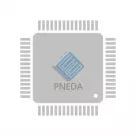 |
AXH010A0D93-SRZ | DC DC CONVERTER 2V 20W | 2718 More on Order |
 |
AXH010A0P-SRZ | DC DC CONVERTER 1.2V 12W | 8658 More on Order |
 |
EVW010A0B641-HZ | DC DC CONVERTER 12V 120W | 5940 More on Order |
 |
QRW025A0A1-B | DC DC CONVERTER 5V 125W | 5616 More on Order |
 |
ESTW015A0F41-SZ | DC DC CONVERTER 3.3V 50W | 3474 More on Order |
 |
QPW060A0M1-HZ | DC DC CONVERTER 1.5V 90W | 2628 More on Order |
 |
LW010A84 | DC DC CONVERTER 5V 10W | 8028 More on Order |
 |
LAW005B | DC DC CONVERTER 12V 5W | 6534 More on Order |
 |
JRW065A0G1 | DC DC CONVERTER 2.5V 163W | 8370 More on Order |
 |
JAHW075A1 | DC DC CONVERTER 5V 75W | 3978 More on Order |
 |
FC250A1 | DC DC CONVERTER 2.5V 50W | 6696 More on Order |
 |
EQW023A0G1-S | DC DC CONVERTER 2.5V 58W | 5976 More on Order |
 |
ATH016A0X43 | DC DC CONVERTER 0.8-3.6V 58W | 4446 More on Order |
 |
QBVW033A0B41-PHZ | DC DC CONVERTER 12V 396W | 4248 More on Order |
 |
QBVW025A0B841Z | DC DC CONVERTER 12V 300W | 5364 More on Order |
 |
QBVW025A0B641Z | DC DC CONVERTER 12V 300W | 8640 More on Order |
 |
EHHD024A0A4-HZ | DC DC CONVERTER 5V | 5238 More on Order |
 |
EHHD020A0F41-HZ | DC DC CONVERTER 3.3V 66W | 3816 More on Order |
 |
ESTW010A0A41Z | DC DC CONVERTER 5V 50W | 7902 More on Order |
 |
KSTW010A0A41-SRZ | DC DC CONVERTER 5V 50W | 4536 More on Order |
 |
APTS003A0X4-SRZ | DC DC CONVERTER 0.6-5.5V 16W | 2592 More on Order |
 |
KHHD010A0A41Z | DC DC CONVERTER 5V 50W | 12672 More on Order |
 |
SHHD005A0F41Z | DC DC CONVERTER 3.3V 15W | 21864 More on Order |

